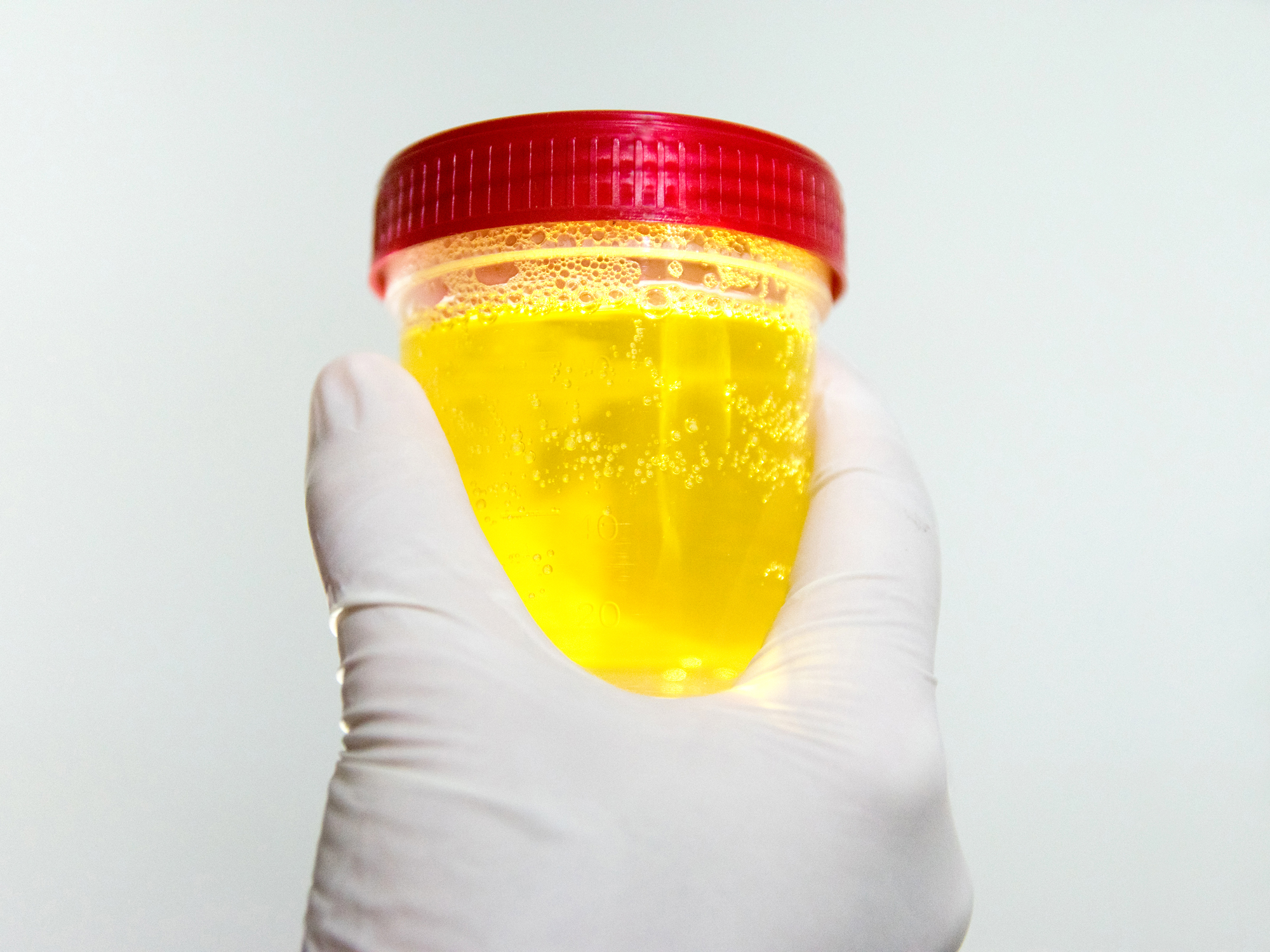Get Easy Health Digest™ in your inbox and don’t miss a thing when you subscribe today. Plus, get the free bonus report, Mother Nature’s Tips, Tricks and Remedies for Cholesterol, Blood Pressure & Blood Sugar as my way of saying welcome to the community!
If your urine’s this color, see a doctor

Have you ever wondered why you’re asked to urinate in a cup during every annual physical exam? Ever wonder exactly what they’re looking for when they analyze your urine?
It may surprise you to learn how many serious health conditions can be detected and prevented through a simple urinalysis. In fact, by keeping an eye on the color and other qualities of your urine, you can be the first to spot a problem and stop it in its tracks.
Changes in your urine can signal problems in a range of organs and bodily systems. It can even warn you of an autoimmune disease. So, it’s important to make note of any changes in the color or odor of your urine.
Here are some things to watch out for.
Changes in urine color
Normally, urine color ranges from pale yellow to deep amber, thanks to the pigment urochrome. The more water you drink, the lighter the color.
If your urine falls outside of this color spectrum, it’s usually time to consult your doctor. A variety of medical and dietary issues can cause urine to take on a range of colors you might not expect.
Red or pink. Blood in the urine is usually the cause. This is never normal, and you should see your doctor immediately.
Factors that can cause blood in urine include urinary tract infections, an enlarged prostate, cancerous and non-cancerous tumors, kidney cysts or stones, kidney disease or bladder stones.
Sickle cell anemia can also be the cause. This genetic disease often causes red blood cells to get stuck in small blood vessels, often resulting in a sudden and fatal stroke.
If you’re a long-distance runner and find blood in your urine, it may be from an injured bladder. You should see your doctor right away.
Orange. This might indicate a problem with your liver or bile duct, especially if you also have light-colored stools. Dehydration can also cause orange-looking urine.
Blue or green. Green urine is sometimes the result of a urinary tract infection caused by pseudomonas bacteria, usually contracted in healthcare settings.
A rare inherited disorder called familial benign hypercalcemia can cause blue urine in children. (Thus, its other name, “blue diaper syndrome”). This disorder causes abnormally high calcium levels in the blood.
Dark brown or cola-colored. Some liver, kidney and urinary tract infections can cause brown urine. Sometimes the kidney damage is a result of muscle injury from extreme exercise.
Murky or cloudy urine is a sign of a urinary tract infection or kidney stones.
Foods and medications that affect urine color
Knowing which foods and medications can affect urine color can help pinpoint the cause and save you the anxiety of wondering if something is seriously wrong.
Beets, blackberries and rhubarb, for example, can turn urine red. So can phenazopyridine (Pyridium), a drug that numbs urinary tract discomfort, and laxatives containing senna, an herb used to treat constipation.
Drugs that cause blue or green urine color include the antidepressant amitriptyline, the NSAID indomethacin, often given for chronic arthritis and propofol, used to relax a patient before general anesthesia. Certain antimalarial and antibiotic drugs can cause brown urine.
It’s not a bad idea to ask your doctor if this can happen when taking any new medication. While it’s not the first side-effect on your mind, it will give you one less thing to worry about if it does occur.
Does it smell weird?
Not to be gross, but any sudden change in the smell of your urine should be noted as well.
Sometimes it’s simply the food you ate for dinner, like asparagus, which can give urine an ammonia-like odor. Vitamin B-6 supplements can change the odor as well.
On the other hand, a change in your urine’s odor could be due to diabetes, liver failure or a bladder or kidney infection. If there’s a sudden change and it doesn’t go away, talk to your doctor.
Rare but serious
Vasculitis is a rare but potentially life-threatening condition that causes inflammation, weakening and scarring of small blood vessels leading to one or more organs.
Vasculitis can be chronic, or the onset can be sudden and severe. It will make the urine tea-colored, and also bring on flu-like aches and chills, as well as bodily rashes.
Finally, bloody or foamy urine can be a sign of lupus nephritis, or lupus of the kidney.
Lupus is an autoimmune disease in which a person’s antibodies attack their own vital organs.
In general, bloody urine should be taken seriously and brought to your doctor’s attention.
Editor’s note: There are perfectly safe and natural ways to decrease your risk of blood clots including the 25-cent vitamin, the nutrient that acts as a natural blood thinner and the powerful herb that helps clear plaque. To discover these and other secrets of long-lived hearts, click here for Hushed Up Natural Heart Cures and Common Misconceptions of Popular Heart Treatments!
Sources:
- What Causes Bright-Yellow Urine and Other Changes in Color? — Healthline
- Urine color — Mayo Clinic
- Blood in urine (hematuria) — Mayo Clinic













